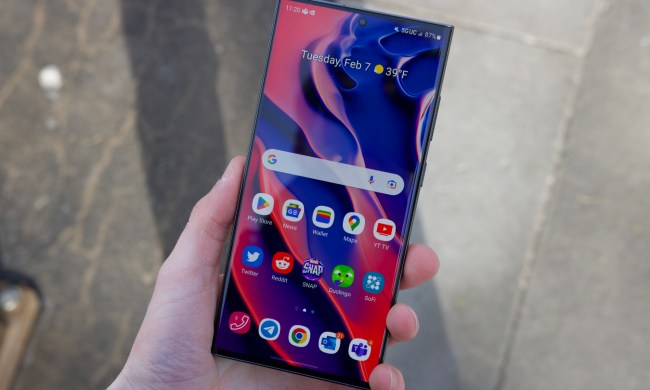Following the March release of the Galaxy S20 Ultra, Samsung has launched the Samsung Galaxy Note 20 Ultra, the bigger sibling of the also-just-announced Note 20. Both of these new phones succeed last year’s Note 10, which was our favorite Android phone of 2019.
The Note 20 Ultra certainly has a lot to live up to, but it has pretty much matched the hype, even if some hands may find it a tad too large. It improves on the Galaxy Note 10 (and the Note 10 Plus) in pretty much every department, featuring a higher-resolution display, a more powerful processor, a more capable camera system, and a bigger battery. But how does it compare to the Galaxy S20 Ultra?
To help you decide which is the Samsung Ultra for you, we compare the two devices across six core categories. By taking a closer look at these two amazing devices, you should be able to work out which is more to your taste.
Specs
| Samsung Galaxy Note 20 Ultra |
Samsung Galaxy S20 Ultra |
|
| Size | 164.8 x 77.2 x 8.1mm (6.49 x 3.04 x 0.32 inches) | 166.9 by 76 by 8.8mm (6.57 by 2.99 by 0.35 inches) |
| Weight | 208 grams (7.33 ounces) | 220 grams (7.76 ounces) |
| Screen size | 6.9-inch Dynamic AMOLED 2X | 6.9-inch Dynamic AMOLED 2X |
| Screen resolution | 3,200 x 1,440 pixels, 20:9 ratio (511 pixels per inch) | 3,200 x 1,440 pixels, 20:9 ratio (511 ppi) |
| Operating system | Android 10, One UI 2.1 | Android 10; One UI 2 |
| Storage | 256GB, 512GB | 128GB, 512GB |
| MicroSD card slot | Yes | Yes |
| Tap-to-pay services | Google Pay, Samsung Pay | Google Pay, Samsung Pay |
| Processor | Exynos 990 (global), Qualcomm Snapdragon 865 Plus (USA) | Qualcomm Snapdragon 865 |
| RAM | 12GB | 12GB, 16GB |
| Camera | 108-megapixel, 12MP telephoto, 12MP ultrawide rear, 10MP front, | 108MP, 48MP telephoto, 12MP ultrawide, 0.3MP time-of-flight rear, 40MP front |
| Video | 8K at 24 fps, 4K at 60 fps, 1080p at 240 fps, 720p at 960 fps, HDR10+ | 8K at 24 fps, 4K at 60 fps, 1080p at 240 fps, 720p at 960 fps, HDR10+ |
| Bluetooth version | 5.1 | 5.0 |
| Ports | USB 3.2, USB-C | USB 3.2, USB-C |
| Fingerprint sensor | Yes, in-display | Yes, in-display |
| Water resistance | IP68 | IP68 |
| Battery | 4,500Ah
Fast charging (25W) Qi wireless charging (15W) |
5,000mAh
Fast charging (45W) Qi wireless charging (15W) |
| App marketplace | Google Play Store | Google Play Store |
| Network support | All carriers | All carriers |
| Colors | Mystic Bronze, Mystic Black, Mystic White | Cosmic Grey, Cosmic Black, Cloud White |
| Prices | $1,299 | $1,400 |
| Buy from | Samsung, AT&T, T-Mobile, Verizon, Amazon, Best Buy, Walmart | Samsung, AT&T, T-Mobile, Verizon, Amazon, Best Buy, Walmart |
| Review score | 4 out of 5 stars | 4 out of 5 stars |
Design, display, and durability

The Galaxy S20 Ultra and Note 20 Ultra are both beautiful smartphones, but in different ways. Both feature a large 6.9-inch AMOLED edge-to-edge display with barely any bezel. That said, the S20 Ultra sports a more curved design, with rounded corners and edges. By contrast, the Note 20 Ultra retains the slightly sharper, more angular body that has come to define the Note series.
Which aesthetic approach is better really depends on your own personal taste. Needless to say, the displays of both phones are stunning, with a 3,200 x 1,440 resolution that clocks in at around 511 ppi. This provides some of the clearest visuals and video you can possibly watch on any smartphone, and both are enhanced further by a smooth 120Hz refresh rate.
Both phones are also very large, although the S20 Ultra is a touch taller, wider, and thicker. It’s also about half an ounce heavier, which can make holding it somewhat awkward. That’s not to say that the Note 20 Ultra lends itself easily to one-handed operation, just that it’s a bit smaller and lighter.
The S20 Ultra and Note 20 Ultra are both IP68 certified, making them resistant to dust and to immersion in shallow water for up to 30 minutes. Considering the barely noticeable differences in design, this means the opening round is a tie.
Winner: Tie
Performance, battery life, and charging
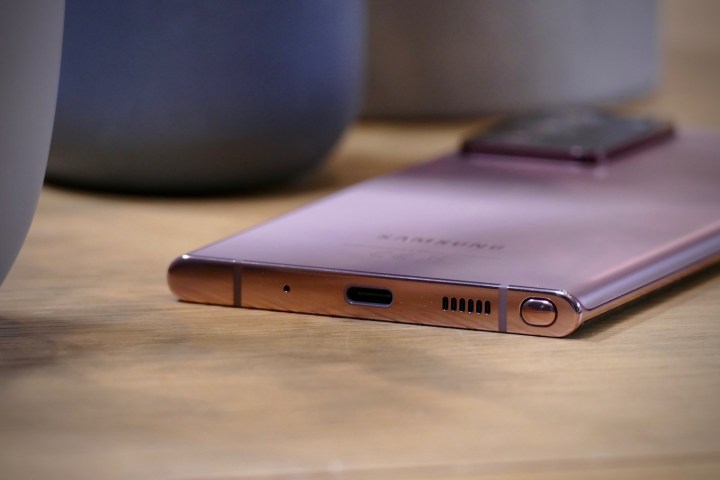
Both phones provide very similar performance, but the Note 20 Ultra has the distinction of running off a newer processor. It ships with the Snapdragon 865 Plus in the United States and comes with the Exynos 990 elsewhere in the world. The S20 Ultra runs on the earlier Snapdragon 865, which won’t make a massive difference in practice but could mean that the Note 20 Ultra handles certain workloads a little more effortlessly than the S20 Ultra.
Other than that, both smartphones pack 12GB of RAM, although the S20 Ultra line offers a model with 16GB, so any computing difference may be canceled out by buying the S20 with extra RAM. The Note 20 Ultra provides 256GB of internal storage standard and can be bought in a 512GB version, while the S20 Ultra is divided among 128GB, 256GB, and 512GB models.
When it comes to the battery, it’s the S20 Ultra that has a slight advantage. It’s furnished with a hefty 5,000mAh battery, while the Note 20 Ultra is powered by a 4,500mAh cell. In practice, this doesn’t make a big difference, since our review of the Note 20 Ultra found that it can last a full day with heavy use. Nonetheless, the S20 Ultra does seem to offer just a little bit more juice, something which may be important to those who can’t recharge as readily. The S20 Ultra also offers 45W fast charging, while the Note 20 Ultra manages only 25W, giving it another small advantage. Both phones also offer 15W wireless charging.
Given the subtle difference in battery life, we’re going to give a narrow victory to the S20 Ultra. The option to buy it with 16GB of RAM also enables it to run a tad faster than the Note 20 Ultra, so it is just about a superior smartphone performance-wise for those who can afford to upgrade.
Winner: Samsung Galaxy S20 Ultra
Camera
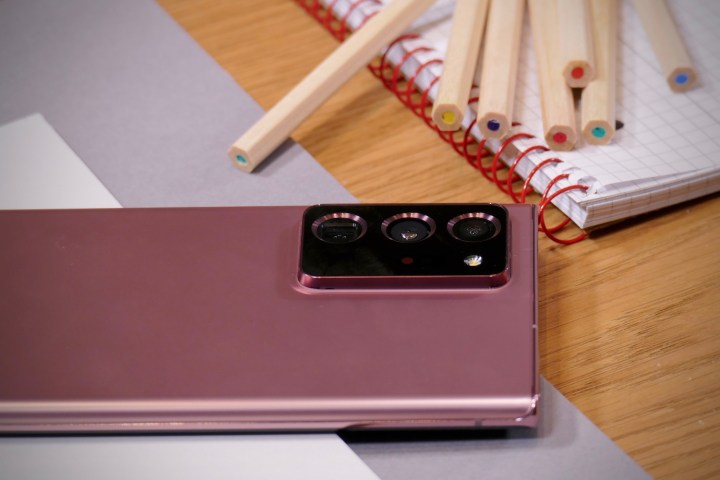
The Note 20 Ultra certainly bests the Note 20 in the camera stakes. It comes with a 108MP main camera lens, while the standard Note 20 offers only a 12MP version. The thing is, its main wide lens is matched by S20 Ultra’s, which also boasts the same 108MP.
Both phones feature three rear camera lens, with the same 108MP wide lens complemented by a 12MP telephoto and a 12MP ultrawide in the case of the Note 20 Ultra. The S20 Ultra, on the other hand, packs a 48MP telephoto lens and a 12MP ultrawide. This larger telephoto lens enables the S20 Ultra to offer a 100 times zoom, in contrast to the 50 times zoom of the Note 20 Ultra.
As we noted in our S20 Ultra review, the 100 times zoom is more of a gimmick than anything else, since shots become grainy when taken at maximum capacity. A 50 times zoom should be more than enough, so few people — if any — will really miss the ability to take a photo of a pixelated tree from a mile away.
In fact, our review of the Note 20 Ultra found that its camera offers a little more versatility than the S20 Ultra’s, providing an excellent main sensor, periscope zoom, wide-angle lens, and Night mode, as well as very good selfies. As for video recording, both enable shooting video at 8K resolution and at a rate of 24 fps, so they can both be relied upon to capture some impressive film footage, assuming you have an 8K TV at your disposal.
This round is a tie. The S20 Ultra may offer a more powerful telephoto lens, but we’ve found that the Note 20 Ultra does a slightly better job of taking great photos under most conditions.
Winner: Tie
Software and updates
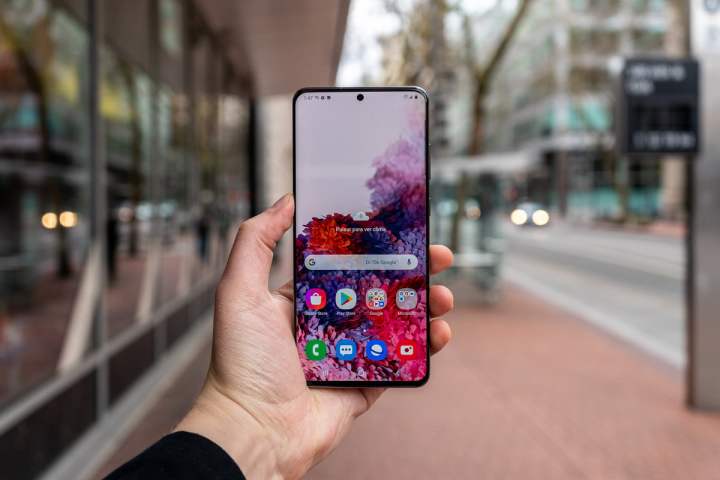
The Galaxy S20 Ultra and the Note 20 Ultra both run on Samsung’s One UI 2 OS, layered over Android 10. Given the large dimensions of both devices, operating on OneUI 2 allows for a more intuitive user experience, with larger apps and icons enabling easier navigation.
The two phones are also likely to receive updates at similar times. With both being Samsung devices, users may have to wait longer than, say, Google Pixel owners for core updates. That said, Samsung was quick in rolling out updates to improve the S20 Ultra’s camera.
Winner: Tie
Special features
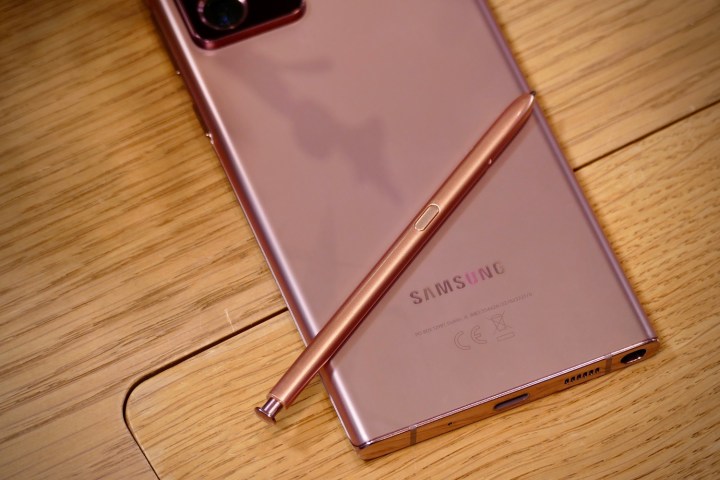
The Galaxy Note 20 Ultra and the Galaxy S20 Ultra are both 5G phones, and the S20 Ultra supports all major 5G bands. The Note 20 Ultra is also 5G-compatible, and according to its FCC certification, it will also support mmWave 5G, the fastest band.
The Note 20 Ultra naturally comes with a stylus. The Note series has long been marketed as a smartphone for the more professional or creative user, with the stylus providing support for a wider range of applications. If you use your phone for work or for projects, the stylus makes a significant difference, providing greater ease and accuracy than available with a finger.
Other than that, reports have suggested that the Note 20 Ultra will be built for streaming Xbox games, a first among smartphones. Combined with its greater suitability for work, we’re giving this round to the Note 20 Ultra.
Winner: Samsung Galaxy Note 20 Ultra
Price and availability
The Samsung Galaxy S20 Ultra starts at $1,400, while the 512GB model is $1,600. You can find it at every phone carrier, and even from stores like Walmart, Amazon, or Best Buy.
The cost for the most basic version of the Samsung Galaxy Note 20 Ultra is $1,299. Like the Galaxy S20 Ultra, you can get this device from every phone provider and buy it at the big-name online stores.
Overall winner: Samsung Galaxy Note 20 Ultra

We have to crown the Samsung Galaxy Note 20 Ultra as the uncontested winner, though there aren’t any major differences between the two devices. You’ll thank yourself for buying this spectacular, gargantuan Android phone. This phone comes with the useful and versatile S Pen, equals the S20 Ultra in the essential areas, and will easily last you for years to come.
The Samsung Galaxy S20 Ultra is still a great option for a high-quality phone that has a lot of valuable features. Since it has a longer battery life, along with the option to upgrade to 16GB of RAM, it’s a popular choice, and you wouldn’t be wrong to buy it. As nice as the S20 Ultra is, it doesn’t hold a candle to the Note 20 Ultra’s adaptability and thus, longevity, making it a top pick for any brand of Android phones on today’s market.


